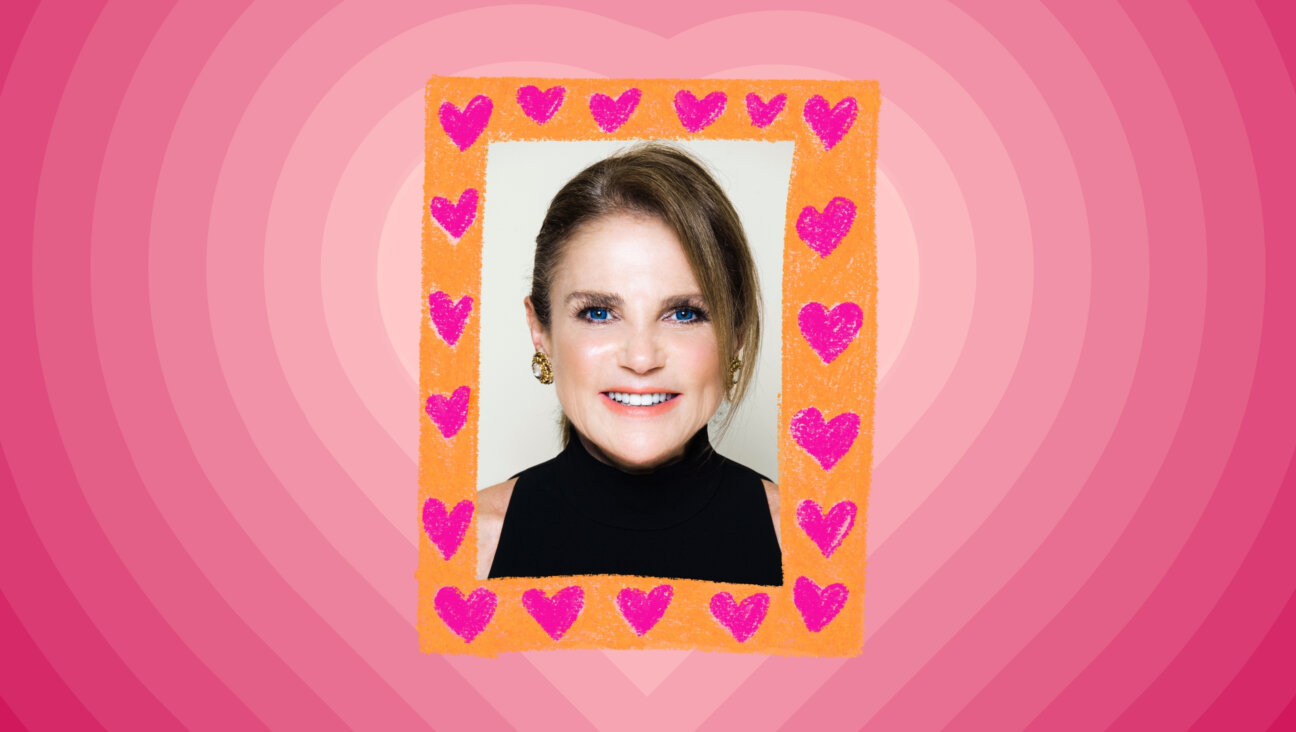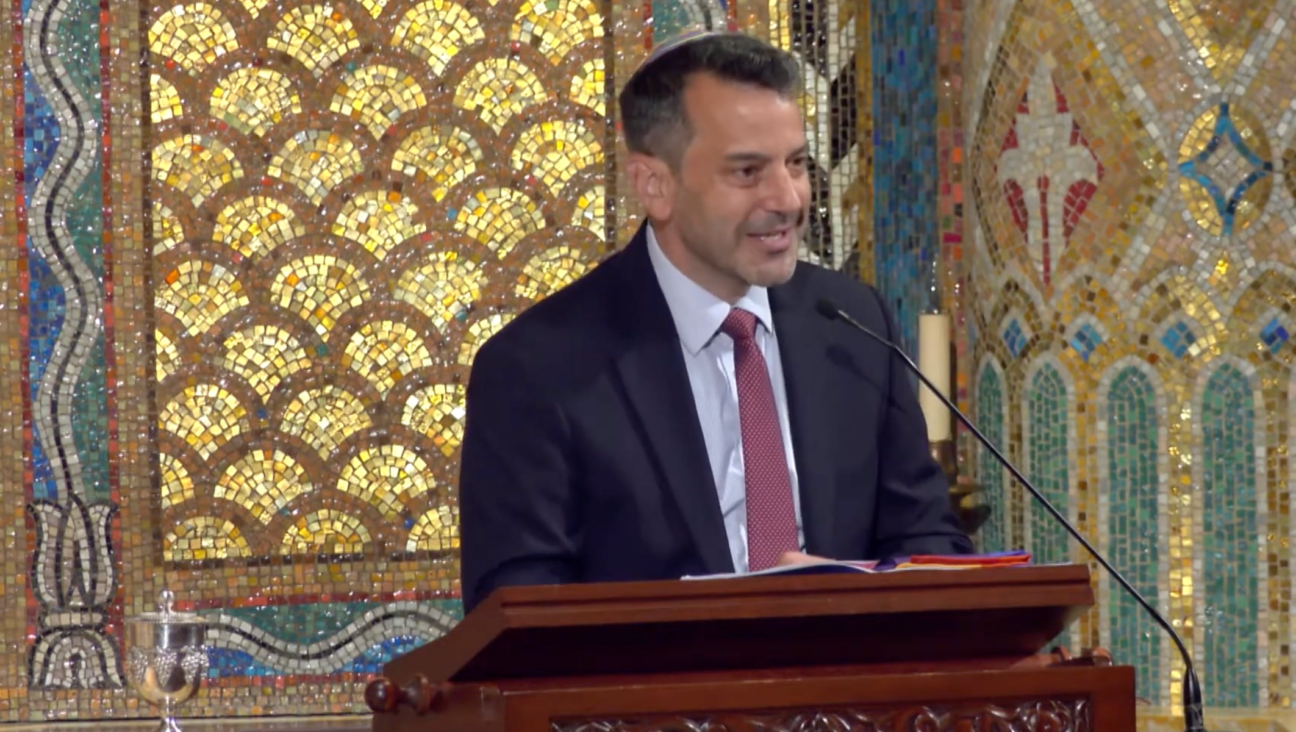St. Petersburg On the Hudson
There is a profile of the kind of person behind today’s booming Russian art market, and Boris Stavrovski does not fit it. He is neither nouveau riche nor an oligarch. He is a computer science professor at the City University of New York who houses one of the largest and most intriguing collections of modern Russian art in his small postwar condo on the Upper East Side of Manhattan. Some 300 paintings and drawings dating from the turn to the middle of the past century cover virtually every inch of the two-bedroom apartment. (Another 200 are in storage.) Even doors are barely discernable, their knobs peeking out under rows of dangling period frames, each carefully selected to suit its precious picture.
“It’s fascinating,” said Joanna Vickery, Sotheby’s London-based head of Russian art. “You feel like you’re in St. Petersburg.”
Taking a vigorously intellectual approach, the self-taught scholar has, over the past 15 years, built a uniquely personal collection of works mostly by émigrés like himself, with a concentration of examples from the so-called World of Art movement that thrived in Russia before the revolution. Spanning a range of styles, from Realist and Impressionist to Cubist and Abstract, the common link, Stavrovski explains, is their creation by “artists who made a life by leaving Russia.”
Roughly one-third of these artists are Jewish — reflecting, according to Stavrovski, the overwhelming presence of Jews among Russia’s intelligentsia — and many of their subjects are marginalized members of Soviet society, including the stark “Portrait of an Old Jew” by Nathan Altman, depicting his uncle in ultra-Orthodox garb, and Pavel Tchelitchew’s “Spangled Head,” a tender rendering of his lover, poet Henry Ford, in watercolor and gouache sprinkled with gold sequins. Theatrical works also abound — portraits of dancer Anna Pavlova and actress Ida Rubinstein, as well as numerous set and costume designs for the Ballets Russes and Metropolitan Opera by the likes of Léon Bakst, Alexandre Benois and Serge Sudeikin.
Stavrovski, who created software for Russian missile navigation systems before the fall of communism, says he was never persecuted in his native country but “always felt I had some limitations as a Jew.” In a recent interview, Stavrovski recounted that it took him 10 years to earn a postdoctoral degree. His supervisor explained simply that it was “impossible” to confer such a high diploma on a “31-year-old Jew.” When Gorbachev came to power, Stavrovski launched his own software company, giving him his first disposable income and enabling him to move to Prague in 1991 before settling in New York in 1997.
Though his means have remained relatively modest, Stavrovski spends most of his income on art. Luckily, his wife, Olga, a musicologist who works as a real estate agent, shares his passion, as does the couple’s 9-year-old daughter, Polina, a competitive gymnast who played an acrobat in the Metropolitan Opera’s recent production of “Pagliacci.” Even as the Russian art market has caught fire, Stavrovski has managed to compete with equal measures of dedication and resourcefulness.
A lifelong collector, Stavrovski started out with postage stamps and medieval coins — a collection sold to the Hermitage — before moving on to illustrated books, which led him to art. While still in Prague, he tracked down the grandson of artist Boris Anisfeld and bought a sizeable number of his best works from the estate — at a time when interest in Russian art, and in Anisfeld in particular, was relatively limited. Stavrovski won’t name names, but he has reportedly snapped up valuable works overlooked by reputable auction houses.
Stavrovski insists that it isn’t harder to find things these days, you just need to know how and where to look — though there’s no question everything is getting more expensive, and even he admits the top lots are beyond his budget. Highlights at Sotheby’s and Christie’s April auctions in New York (London sales follow in May) include groups of works by Anisfeld, as well as Alexander Iakovleff and Boris Gregoriev — all mainstays of the collection — with estimates ranging from $10,000 for works on paper to $600,000 for the best paintings, though recent history suggests prices may well exceed that.
Given how interest in and prices for these artists have spiked in recent years, Stavrovski doubts the upcoming offerings will be affordable for him, but he still discovers “bargains” while poring through flea markets and regional auction houses. “He’s a great finder,” said Julian Barran, a broker based in Somerset, England, who has handled Russian pictures for 40 years and wistfully recalls selling several pictures to Stavrovski “years ago for nothing — compared to today’s prices.”
To maintain his collection, Stavrovski sells or exchanges several works each year, but never the jewels in his crown. “He’s that rare real collector not so interested in the money side,” said Vickery, citing as evidence one of her favorite pieces: a pastel drawing of Pavlova by Iacovleff. “He bought it a long time ago, and it’s probably gone up in value 10 times, but he wouldn’t sell it.” Indeed, the intensely personal nature of the collection makes it somewhat uneven, despite the presence of such major works. “I’m trying to collect everything that describes these artists in the most compelling way,” Stavrovski explained.
He lends works to museums regularly; next month, some 50 theatrical designs are going on tour in a four-city Japanese exhibition, and another 26 works will be included next year in a show of Russian art from Western collections at the Russian State Museum in St. Petersburg. Still, the collection remains obscure. It had its first solo treatment this past February, a sampling of 16 of the best portraits, in Florida at the Palm Beach art and antiques fair.
“It’s a delightful collection,” Barran said. “Very few people know about it, but that’s one of the things that make it exciting.” To an extent, this parallels the field itself. Although growing interest has brought more widespread attention, the artists themselves are still relatively unknown in the West. This is certainly changing, but it doesn’t seem to deter Stavrovski, who could easily retire on the sale of just a few prized works. “Whenever I want a new piece,” he said, “Olga presumes there’s no place to put it.” But, Stavrovski suggested, a collector has ways of finding more space for his art, and “if you don’t have room, there’s always storage.” Spoken like a true New Yorker.
Jeannie Rosenfeld, a former editor at Art + Auction magazine, is a writer based in New York, specializing in fine and decorative arts and design.
A message from our Publisher & CEO Rachel Fishman Feddersen

I hope you appreciated this article. Before you go, I’d like to ask you to please support the Forward’s award-winning, nonprofit journalism so that we can be prepared for whatever news 2025 brings.
At a time when other newsrooms are closing or cutting back, the Forward has removed its paywall and invested additional resources to report on the ground from Israel and around the U.S. on the impact of the war, rising antisemitism and polarized discourse.
Readers like you make it all possible. Support our work by becoming a Forward Member and connect with our journalism and your community.
— Rachel Fishman Feddersen, Publisher and CEO























